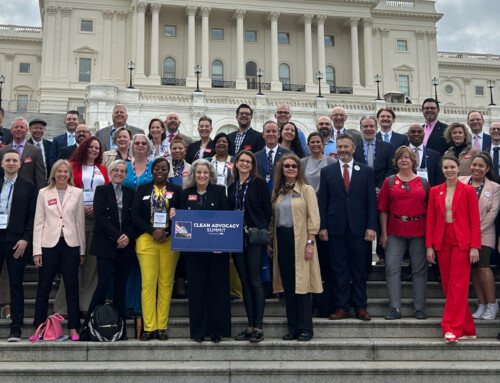Government Incentives for Hiring Ex-offenders, Disabled, & Veterans
According to the U.S. Bureau of Labor Statistics, the labor market remains tight. Unemployment is low (3.7%), wages are increasing as employers compete for workers, and the jobs openings rate (4.6%) is higher than the hire rate (3.8%), making July 2019 the 16th straight month where there are more unfilled positions than workers looking for jobs. At the same time, a solid and steady quit rate (2.3%) reflects workers’ confidence in being able to voluntarily leave a job and find other opportunities.
Employers in cleaning related industries from manufacturing of cleaning products, to distributors, to cleaning service providers are all struggling to attract and retain workers. While providing a more attractive job offer and work environment compared other employers is always an option, that alone isn’t always enough. One of these out-of-the-box solutions is turning to some overlooked labor pools such as non-violent ex-offenders, people with disabilities, and veterans of the armed forces. In addition to being often overlooked by employers there are federal and state incentive programs for employers that hire these workers. Some of these incentives are direct tax credits while others offer fidelity bonding to protect employers from possible risks.
Employing Ex-Offenders
According to the Prison Policy Initiative, formerly incarcerated people are unemployed at a rate of over 27%: over 23 percentage points above the national average. Each year, hundreds of thousands of inmates are released from prison qualified, rehabilitated, and ready to work, but many face structural barriers to securing employment, particularly within the period immediately following release.
Why the gap?
Some companies believe that people who have criminal records won’t be good workers, even if they’re just as qualified for a job as those without a criminal record. In part, this arises out of fear that the job seeker might commit a crime on the job due to the “once a felon always a felon” stereotype.
On the contrary, the true indicator for recidivism seems to be a lack of employment. According to the Pew Research Center, ex-offenders “are no more likely to commit workplace crimes than hires without them.” But for those who cannot find employment to support themselves, five-year recidivism rates hover around 76.6%, according to the U.S. Bureau of Justice.
In response, federal and state levels have implemented economic incentives for hiring ex-offenders. Federal-level tax credits and fidelity bonding is available in every state, and four states offer tax credits for employing ex-offenders. Hiring this group of workers would reduce labor shortage issues and recidivism rates, as well as produce secondary effects of higher living standards for ex-offenders, reductions in the amount of taxpayer money going towards welfare services, and increased safety in our communities; all the while avoiding such high wage run-ups characterized by the general labor market.
Employing People With Disabilities
People with disabilities are a largely untapped labor pool. In fact, over 50% of Americans with disabilities are unemployed or out of the workforce completely. Even in places that employ a high percentage of people with disabilities, the employment gap of this group relative to the population as a whole is striking: anywhere from 20 to 45 percentage points according to Brookings.
Why the gap?
“Employers may be unaware of the capacity of people with disabilities, unfamiliar with how to recruit and hire them, and unfamiliar as well with workplace accommodations,” according to Brookings. Moreover, “several reports document that people with disabilities face attitudinal barriers and stigma in the labor market, a perception that is reinforced by a recent field study finding that employers were less likely to respond to resumes and cover letters from job candidates who disclosed disabilities, even when the candidates were equally qualified as those without disabilities.”
To close these gaps, governments now provide economic incentives for employers to hire people with disabilities. Federal-level tax credits for Vocational Rehabilitation Referred Individuals are available in every state, and 10 states offer tax credits for employing people with disabilities. Bolstering the employment of people with disabilities at your company can both reduce the labor shortage in a more affordable way, and uphold goals emphasized by the Americans with Disabilities Act (ADA): equality of opportunity, full participation, independent living, and economic self-sufficiency.
Employing Veterans
With U.S military veterans, the trend is a bit different. Veteran employment touts levels above the national average, (with an unemployment rate 0.2% lower than the July 2019 seasonally-adjusted rate). However, unemployment is not the only indicator of a gap in career interests, opportunities, and challenges for veterans.
Why the Gap?
While veterans’ training provides them with a solid skill set for the workplace, some (who would like to work full-time) may only be able to obtain a part-time position, others may be on reserve, and still others have given up looking for work altogether, and thus would not be included in the unemployment rate. Furthermore, civilian employers often look for candidates who have clear experience and education, and do not realize that veterans qualify.
To help realize these gains, economic incentives are also being pushed for veterans. This includes federal-level programs as well as state-level programs in 13 states. Hiring a veteran can help both reduce the strain of the labor shortage and contribute a strategic asset to your business.
To learn more about the policies and programs that exist for hiring these groups of people, and to find out what options are available in your state, check out our brand-new summary document, which you can access from here.

















